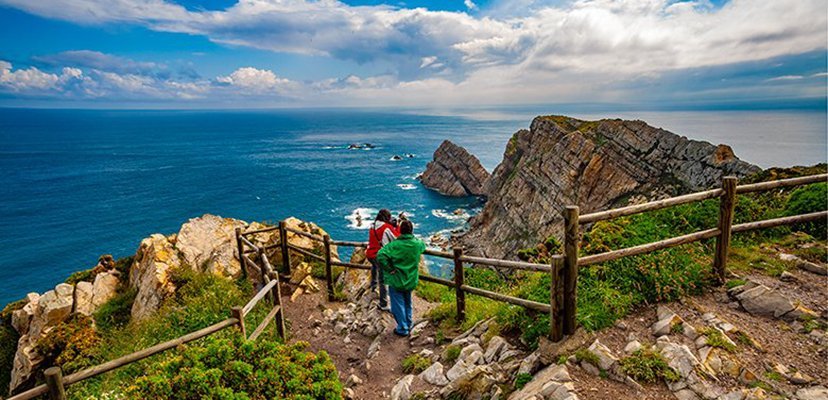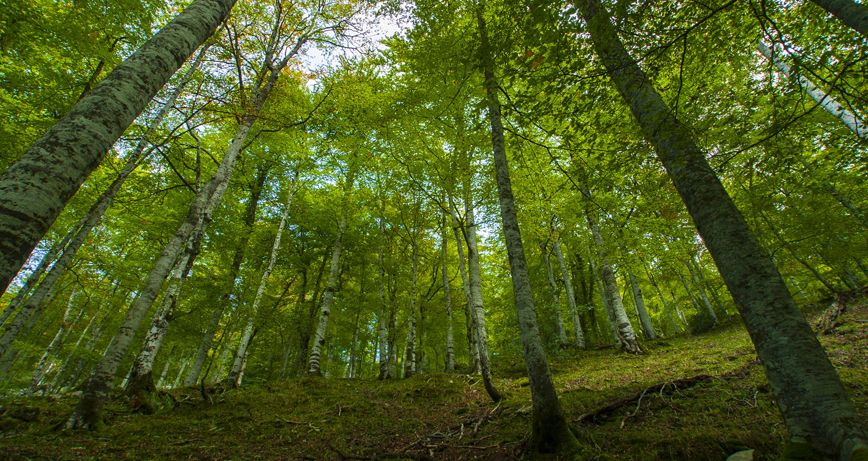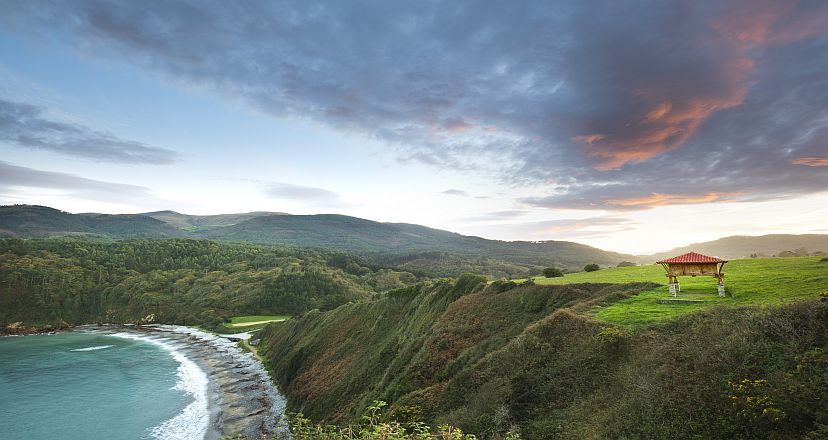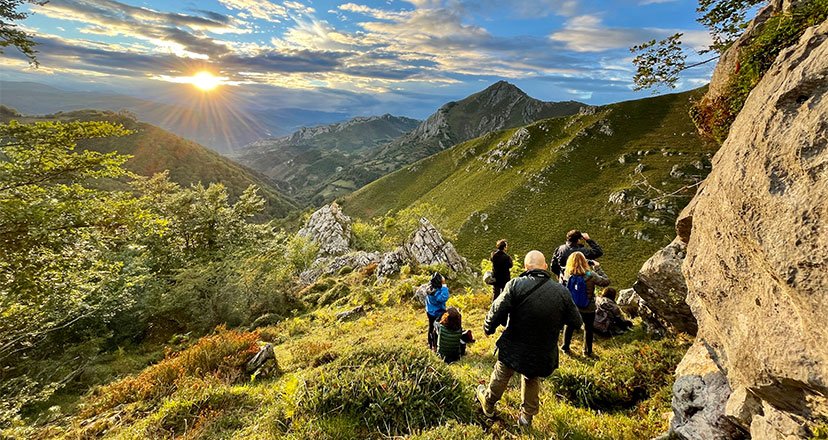Back The best ecotourism plans in Asturias
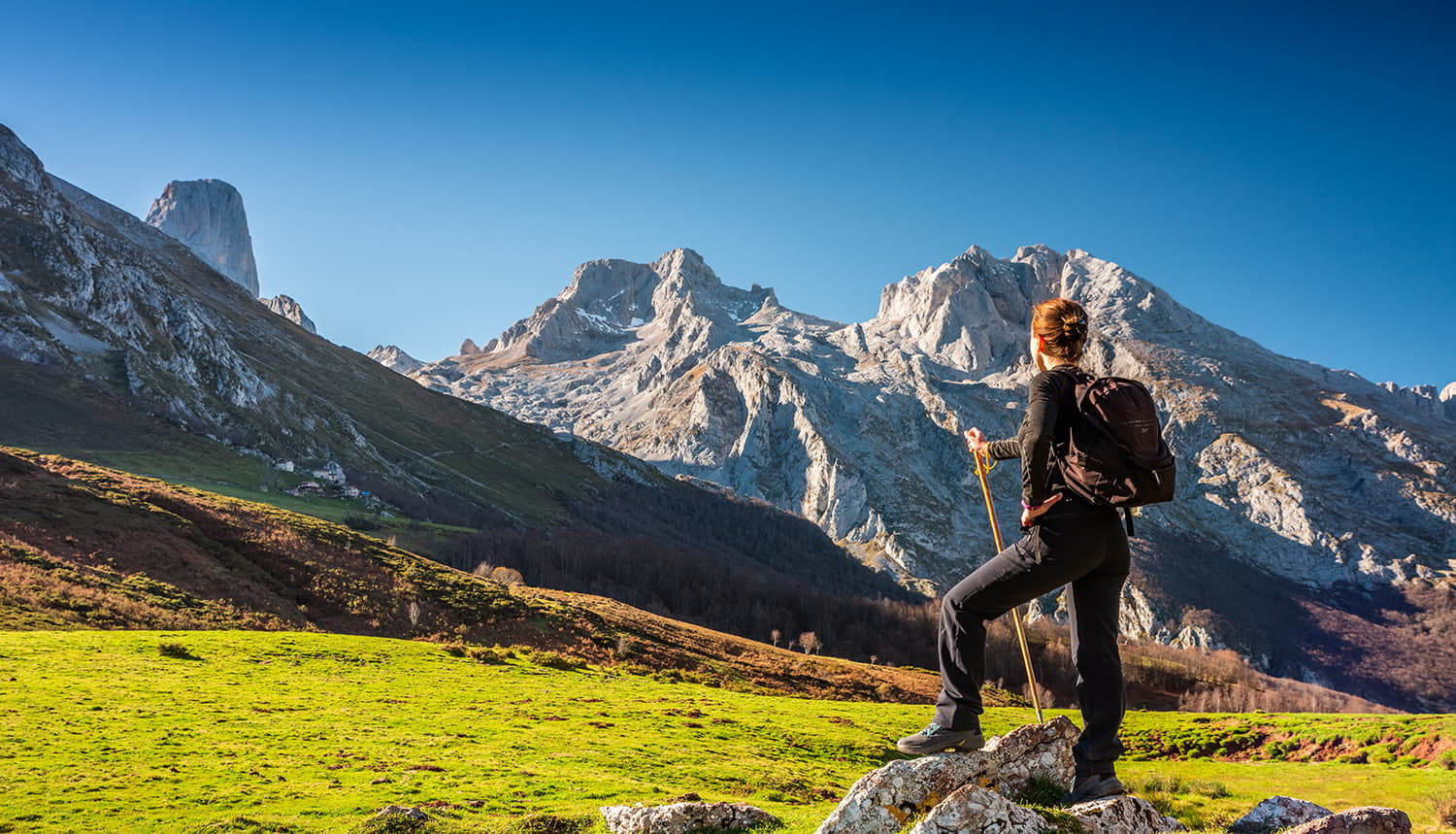
The best ecotourism plans in Asturias
A total immersion in nature awaits you in this eco-paradise called Asturias, where you will enjoy activities and plans to make the most of this universe of flora, fauna and landscape.
Asturias is a true eco-paradise. It is a place where nature embraces you on all four sides. You will find yourself surrounded by unusual sensations as you discover species that you never even imagined existed, as you listen to new sounds, as you photograph incomparable places.
Forest, coast, mountains, paths. Everything at your fingertips. So easy, so human. You just have to live it.
In the Asturian eco-paradise you will feel like Charles Darwin when he formulated his theory of the evolution of species...
A whole bath of nature awaits you!
Asturias, a paradise for nature photography
Asturias offers you an infinite "book" of nature to photograph, because there are thousands of corners and moments that you can immortalise with your camera or mobile device.
Authentic wonders that immediately enrich not only your life, but also your social networks, blogs and other online and offline channels.
With the added advantage that, as the landscapes are so beautiful and the light in Asturias so flattering, you don't need to be a professional photographer to capture snapshots that will be the admiration of all those who see them.
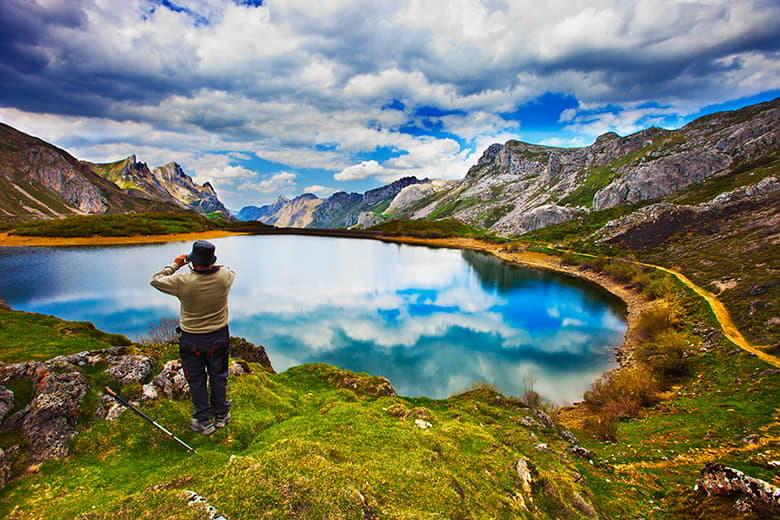
Asturias appeals to the cameras, because it has an innate and natural photogenic quality.
Nothing will escape the curiosity of your lens: high, emblematic peaks such as Urriellu or Naranjo de Bulnes; mountain ranges such as Cuera or Sueve; coastal landscapes, cliffs and beaches; panoramic viewpoints; oak groves, beech forests, lakes, rivers, streams and waterfalls; characteristic flora and fauna such as bears, wolves or birds...
In short, the suggestions and possibilities are endless, and Asturias is waiting for you to explore them.
Land of great sightings: bears, wolves and other land mammals
Asturias is a privileged land in the broadest sense of the term, and is therefore an ideal place to enjoy wildlife sightings. The greats of the Iberian fauna come together in the Natural Paradise, and happily inhabit this Eden where you will find the most varied species.
Bears, wolves, deer, fallow deer, chamois, wildcats, genets and otters are just some of the illustrious examples of the Asturian "Noah's ark". Among them all, the Cantabrian brown bear is particularly noteworthy for being the largest land mammal present in the Iberian Peninsula.
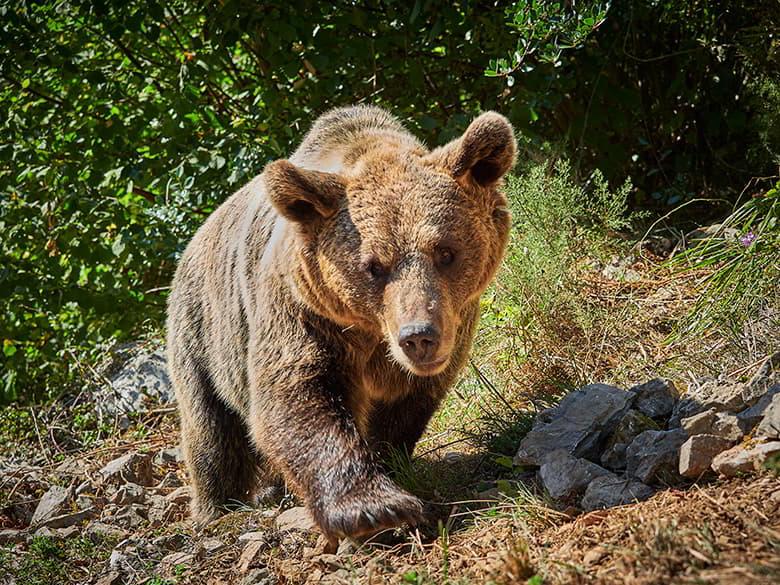
So with such a natural panorama, there are many unforgettable experiences awaiting you, such as brown bear watching in the nature reserves of Somiedo, and the Fuentes del Narcea, Degaña and Ibias. Or a visit to the Casa del Oso in Proaza, and a walk around the bear enclosure on the Senda del Oso itself, where you can see this great plant-eater in semi-freedom.
If it is a question of wolves, you can follow their tracks in the Fuentes del Narcea, Degaña and Ibias Nature Reserve, and you will also get to know them a little better if you visit the Casa del Lobo, in Belmonte de Miranda, where you can also visit a semi-free-range enclosure.
And of course, another unforgettable natural moment is the rutting of the deer, which you can hear at the beginning of autumn in spectacular spots in the mountains of Aller, Ponga, Somiedo and Las Ubiñas-La Mesa.
As well as unforgettable sightings of chamois in the Picos de Europa National Park and in the Redes Nature Reserve. And to top it all off, a glimpse of the Asturcones in the Sierra del Sueve.
Whale watching, the best way to get to know the marine mammals of the Bay of Biscay
The Cantabrian Sea is home to hundreds of fascinating species, and exploring its seabed is an adventure, as are the sightings on the immense sheet of salt water of this sea that bathes and enriches the coast of Asturias.
Among the species that can be observed are dolphins and whales. It is also a fact that 7 of the 20 species of whales existing on the planet are present in the waters of the Cantabrian Sea, although they are not easy to spot.
Experts say, and without a doubt, it is best to be guided by their opinion, that two of the best areas for sighting cetaceans, especially dolphins, are the Lastres canyon and the Cachucho reserve, the latter located more than 30 miles to the north of Ribadesella.

But you can also enjoy these marine treasures on land, because in Asturias there are numerous places where you can get to know them a little better. This is the case of the Parque de la Vida, in Luarca/Ḷḷuarca, a place for the recovery of species, and also an educational space on marine, terrestrial and cosmic ecosystems.
Other places of interest are the Cabo Peñas Marine Environment Interpretation Centre, the Nalón Estuary Interpretation Centre, the Eo Estuary Interpretation Centre and the Villaviciosa Estuary Interpretation Centre.
Also, don't miss the Gijón Aquarium, the Luanco Maritime Museum, or the Sea History Museum in Puerto de Vega, in Navia.
Birdwatching: enjoying bird watching
At this point, nobody doubts that Asturias is a paradise. That is why what is really interesting is to make the most of the many possibilities offered by this great natural spot, where ecosystems and habitats multiply.
From sea level to the highest peaks, Asturias is a succession of landscapes, where the most varied species of birds 'nest'. In total, there is evidence of the existence of almost 400 species, both resident and migratory.
Birdwatching is therefore an increasingly popular activity, and Asturias is one of the most popular destinations in Spain.
The most outstanding bird of prey on the coast is the osprey, while in the rivers the kingfisher and the dipper abound.
In the forests, the great winged jewel is the already scarce Cantabrian capercaillie, and the middle spotted woodpecker.
Another ornithological jewel is the bearded vulture, whose ideal habitat is the high limestone mountains of the Picos de Europa.
For maximum enjoyment, bird watching requires patience and, if possible, good binoculars. The rest is provided by the ecosystems and the beautiful scenery.
The Eo estuary and the Villaviciosa estuary are two wetlands not to be missed for birdwatching, and at the same time there are other key places such as the Mirador de la Reina viewpoint, in the Picos de Europa; the coast of Gijón; Cape Peñas; the Central Mountains of Asturias; Somiedo; Fuentes del Narcea, Degaña and Ibias; Ponga, some areas of the Ubiñas-La Mesa, and the La Polina bird observatory at the Rioseco reservoir (Sobrescobio), among other places.
A walk through the Asturian forests
The greenery of the Asturian forests is a characteristic of a land where vegetation is present at every turn.
This green mantle, typical of a temperate and humid climate, is one of the hallmarks of this Natural Paradise. The forests of Asturias are famous for their power and beauty.

Oak and beech groves cover and colour the Asturian vegetation, with beech groves being more abundant in the centre and east, while oak groves are more common in the west of Asturias.
Chestnut, birch, holly and yew trees, among others, also play an important role in mountainous areas.
Such a rich and healthy panorama translates into a high biodiversity of flora: algae, fungi, lichens and all kinds of plants proliferate both on land and in the riverbeds and coastal areas of Asturias.
So there are many and varied places to visit, enjoy and breathe fresh air. But there are a dozen unmissable 'plant appointments': the forest of Muniellos, one of the most extensive oak groves in Europe, and the beech forest of Monasterio de Hermo, which is the largest in Asturias. Both are in Cangas del Narcea. Also in the west, specifically in Allande, is the Boxo cork oak forest, the largest in the Principality.
In the east is the holm oak forest of San Emeterio, in Pimiango (Ribadedeva); the Buelles willow grove, in Peñamellera Baja; the beech forest of La Biescona and La Tejeda, both in the Sierra del Sueve; the forest of Peloño, in Ponga, and the beech forests of Redes, in Caso and Sobrescobio.
Asturias is also one of those places where you travel to see a tree. A hundred-year-old or thousand-year-old tree, which treasures magic and tradition. Authentic natural monuments and assets of cultural interest such as the Bermiego yew tree, in Quirós, or the Carbayón de Valentín, in Tineo.
The dinosaur coast, unique in the world
There is a stretch of coastline in Asturias that hides a fascinating treasure. A treasure that often takes the form of ichnites or dinosaur footprints. For this reason this area of the coast, which includes the municipalities of Ribadesella, Caravia, Colunga, Villaviciosa and Gijón, is known as the Dinosaur Coast and covers an area of just over 44 kilometres.
These deposits with ichnites date from 150 million years ago, in the Jurassic period, when different species of biped and quadruped dinosaurs left their footprints in the then soft sandy substratum.
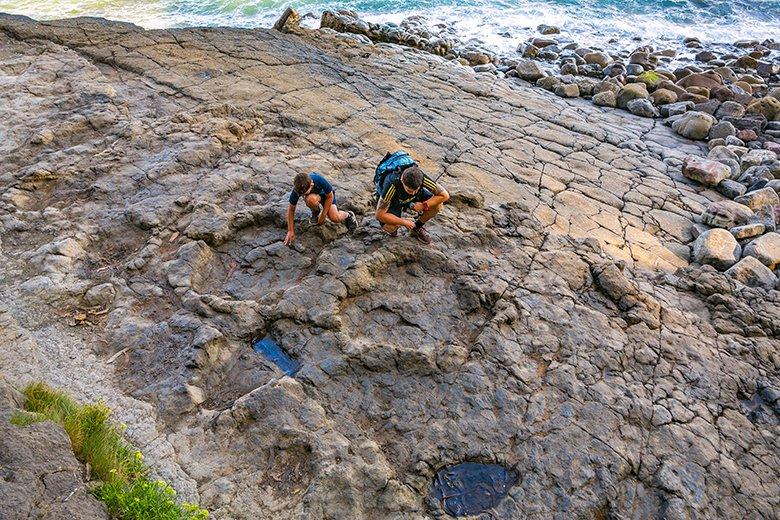
So touring the Jurassic coast of Asturias is an incredible journey back to the ages of the Earth, and therefore you cannot miss key places such as the beach of Santa Marina and the cliffs of Tereñes, in Ribadesella; the beach of La Griega and the cliffs of Llastres in Colunga; the port and lighthouse of Tazones, as well as the cliffs of Oles and the beach of Merón, all of which are in Villaviciosa.
A visit to the Jurassic Museum of Asturias (MUJA), which houses the best collection of dinosaur footprints in Europe and the third largest in the world, is also a must. In addition, its exteriors have numerous life-size dinosaur replicas, making this a very educational and fun place for family entertainment.
Discovering the landscapes of Asturias from viewpoint to viewpoint
The landscapes of Asturias are of the most varied: gentle mountains and steep peaks, narrow valleys, mighty rivers, vigorous streams, unexpected waterfalls, mountain ranges, mountain massifs, estuaries, marshes, coastal shores, impressive cliffs...
With such a menu of images it is impossible not to feed body and soul in the healthiest conditions.
To discover so much and so good, there is always a viewpoint in the most suitable place.
For this reason, dozens and dozens of privileged vantage points dot the Asturian coastline, and some of them are real "must-sees" on your Asturian journey.
On the coastline and from east to west: La Boriza, in Llanes; San Roque, in Llastres; Cabo Torres and Cabo San Lorenzo, in Gijón; Cabo Peñas, in Gozón; Espíritu Santo, in Muros de Nalón; Cabo Vidio, in Cudillero; Cabo Busto and Ermita de La Regalina, in Valdés, and Penarronda (border between Castropol and Tapia de Casariego), among the most outstanding.
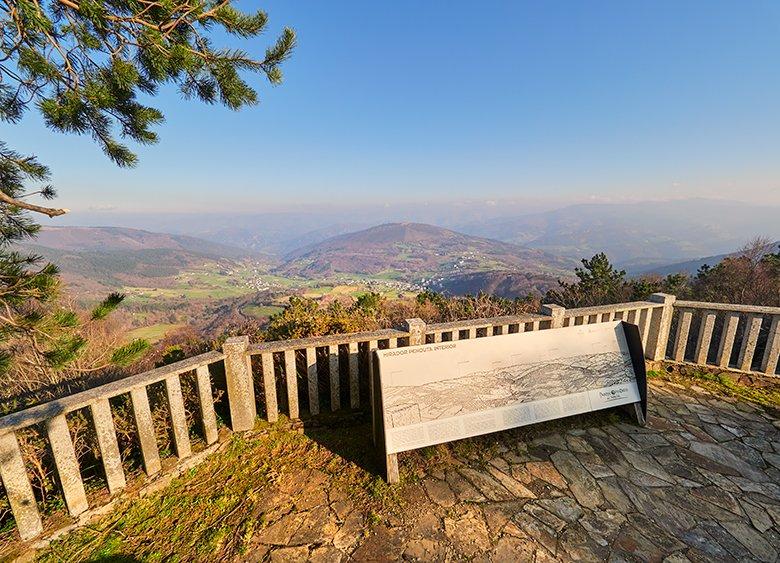
Inland some of the most emblematic viewpoints include El Fito, in Caravia; Coto Bello, in Aller; the Naranco in Oviedo, and the meanders of the Nora, between Oviedo and Las Regueras; the Alto de La Cobertoria, in Lena; Las Ubiñas, in Quirós; Monteagudo, in Pravia; Alto del Palo, in Allande; Penouta, in Boal; Santesteba, in Illano; Salime, in Grandas de Salime, and the mountain pass of La Garganta, in Villanueva de Oscos.
And of course, you can't miss the view of the Picos de Europa from these viewpoints: the Pozo de la Oración and Pedro Udaondo, in Cabrales; the Mirador de los Canónigos, the Mirador de la Reina, the Mirador del Príncipe, the Mirador del Rey, the Mirador de la Princesa, and the Mirador de Entrelagos, in Cangas de Onís .
Also, don't miss the Tarna pass, in Caso; the Cerredo pass, in Degaña, and the Connio pass, in Cangas del Narcea, among other wonders with spectacular panoramic views.
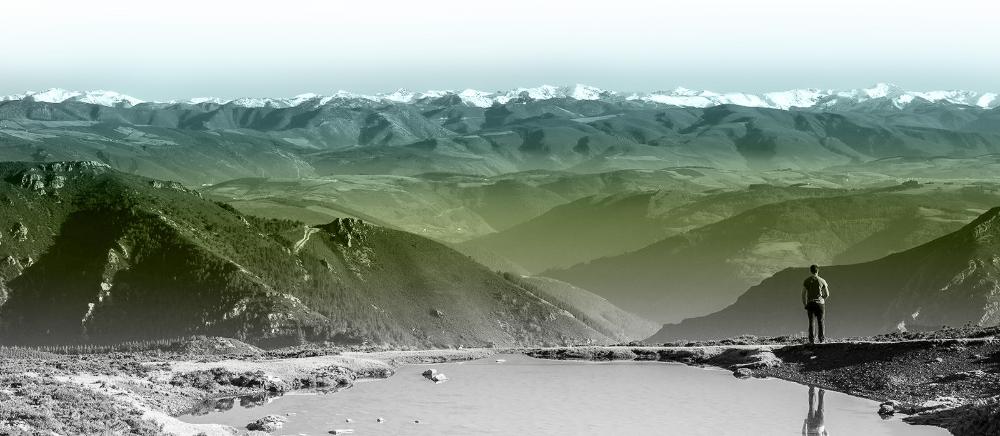
Subscribe to our newsletter and take advantage of offers, discounts, and news
Subscribe

